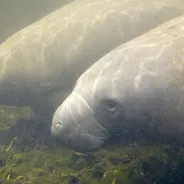A bird that went extinct has reportedly arisen from the dead after it evolved once more, according to scientists.
Research found that the last surviving species of flightless bird in the Indian Ocean - a type of rail - has actually been around before. The bird was able to regenerate through a process called "iterative evolution".
This means that on two separate occasions - over tens of thousands of years apart - a species of rail colonised an atoll called Aldabra. In both instances, the bird ultimately became flightless, and the latter bird can still be found on the island now.

Per scientists, iterative evolution occurs when the same or similar structures evolve out of the same common ancestor at different times.
And not only is this the first time it has been seen in rails, but it is also the most significant case seen in any bird. White-throated rails hail from Madagascar, but tend to colonise other isolated islands, including Aldabra, which they then tend to favour.
"These unique fossils provide irrefutable evidence that a member of the rail family colonised the atoll, most likely from Madagascar, and became flightless independently on each occasion," detailed lead researcher, Dr Julian Hume, who is an avian palaeontologist and Research Associate at the Natural History Museum.

"Fossil evidence presented here is unique for rails, and epitomises the ability of these birds to successfully colonise isolated islands and evolve flightlessness on multiple occasions," he continued.
And according to researchers, there's no better evidence of such a process happening in any species of bird;
"We know of no other example in rails, or of birds in general, that demonstrates this phenomenon so evidently. Only on Aldabra, which has the oldest paleontological record of any oceanic island within the Indian Ocean region, is fossil evidence available that demonstrates the effects of changing sea levels on extinction and recolonisation events," said co-author Professor David Martill, from the School of Earth and Environmental Sciences at the University of Portsmouth.
"Conditions were such on Aldabra, the most important being the absence of terrestrial predators and competing mammals, that a rail was able to evolve flightlessness independently on each occasion."












